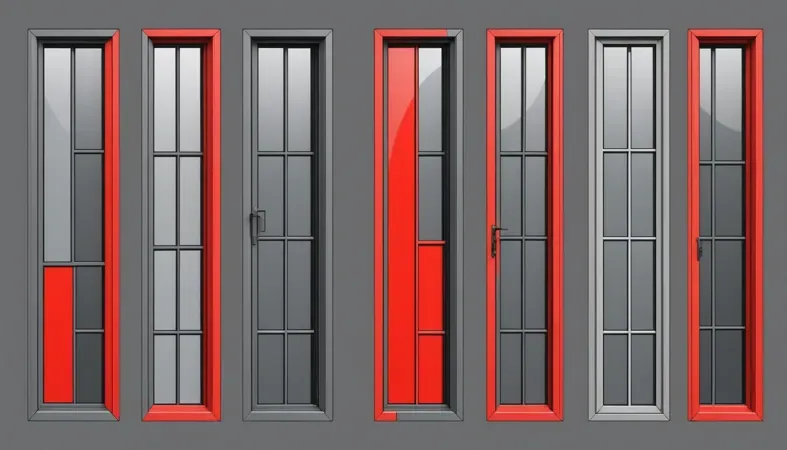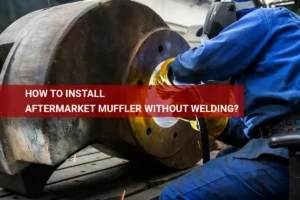How Long Does 3M Window Weld Take to Cure? Cure Time, Applications, and Tips
Published on: April 22, 2025 | Last modified: March 4, 2025
By: Mark Carter
3M Window Weld is a strong adhesive designed for bonding car windows and windshields. It creates a solid seal that protects against moisture and keeps your vehicle safe.
Now, you might wonder, how long does 3m window weld take to cure? It’s crucial to follow the manufacturer’s recommendations to ensure the best results. Personally, I found that waiting the full duration really enhances adhesion and stops any leaks.
In this guide, I’ll cover how long it takes 3M Window Weld to cure, the types of 3M Window Weld available, prerequisites for proper application, important steps for curing, essential precautions, and common pitfalls to avoid. You’ll also learn about the advantages, various use cases, and even consider if there are alternatives. Let’s dive into how long does it take 3M Window Weld to cure and more!
Contents
- How Long Does 3M Window Weld Take to Cure?
- What is 3M Window Weld?
- Types Of 3M Window Weld
- Prerequisites to Keep in Mind
- Steps to Cure 3M Window Weld
- Essential Precautions
- Types Of Applications for 3M Window Weld Cure
- Factors Influencing the Cure Time Of 3M Window Weld
- What Could Go Wrong: Common Issues
- Aftercare, Inspection, and Advanced Tips for 3M Window Weld Cure
- Advantages Of Using 3M Window Weld
- Use Cases Of 3M Window Weld
- Are There Any Alternatives to 3M Window Weld?
- Frequently Asked Questions (FAQs)
- Conclusion
- References
How Long Does 3M Window Weld Take to Cure?
3M Window Weld is an adhesive designed for auto glass installation. So, how long does 3M Window Weld take to cure? It typically cures in 24 hours (Most Environments). It’s crucial for automotive and construction uses, offering a durable seal. Proper curing is essential to prevent damage from environmental factors and powerful light sources can complicate this process. Discovering if welding light can damage a camera helps understand its potential impact on certain materials.
What is 3M Window Weld?
3M Window Weld is an advanced adhesive designed for automotive repairs. It’s a high-performance sealant for bonding glass to metal. It’s typically available in two main variants: 3M 8609 and 3M 8682. Both products offer excellent durability and can withstand temperatures from -40°C to 100°C (-40°F to 212°F), providing strong support for structural repairs.
You might wonder about the curing time for 3M Window Weld. In my experience, curing times vary based on conditions like temperature and humidity. Typically, it takes a few hours to several days to fully cure. Temperature significantly impacts how quickly it sets!
I used 3M Window Weld frequently for fixing windshields and auto body components. I recall one project where it took time to determine the actual curing time. Getting the timing right is crucial for a successful bond, so always check the specific cure times on the product guidelines!
Types Of 3M Window Weld
What are the different types and their curing times?
-
3M Window Weld Super Fast
This type cures quickly, designed for rapid projects. It sets in about 10-15 minutes, making it great for urgent tasks. For best results, apply evenly and allow a full cure in 24 hours.
-
3M Window Weld Black
This one’s typically used for automotive applications and provides a sleek appearance. It usually cures in about 24 hours. To ensure effective curing, avoid moving the substrate for at least 12 hours.
-
3M Window Weld Structural Adhesives
These adhesives provide superior bonding for heavy-duty applications. They cure in about 3-5 hours, making them suitable for various settings. To maximize strength, apply pressure during the first hour of curing.
-
3M Window Weld Fast Cure
This type offers a quicker solution for urgent applications. It cures in just 30 minutes. To ensure a solid bond, allow it to sit undisturbed for at least 1 hour after application.
-
3M Window Weld Urethane Sealants
Ideal for sealing, these last long and withstand extreme conditions. Cure time typically ranges from 2 to 7 days. To achieve optimal performance, ensure the area is clean and dry before applying.
We’ve wrapped up the different Types of 3M Window Weld here. Next up, we’ll look at essential Prerequisites to Keep in Mind.

Prerequisites to Keep in Mind
What do you need to start?
- 3M Window Weld Primer: You need a primer like 3M 5952. It enhances adhesion, ensuring a solid bond that affects how long 3M window weld takes to cure.
- 3M Window Weld: You require actual window weld, such as 3M 8609 Windo-Weld. This ensures proper sealing and longevity of the glass installation.
- 3M Window-Weld Applicator: A dedicated applicator like 3M 08682 helps create a stronger, uniform bead, which is crucial for effective curing.
- Clean Rags: These are necessary for cleaning the surface with products like 3M General Purpose Cleaner to remove contaminants. A clean surface affects curing time.
That covers key prerequisites to consider. Let’s now take a look at the steps to cure 3M window weld.
Steps to Cure 3M Window Weld
Now, we’ll cover the essential steps to effectively cure 3M Window Weld.
-
Apply 3M Window Weld
Start by applying 3M Window Weld generously along the seam or area needing sealing. Ensure an even application with a thickness of about 1/8 inch (3 Mm) for best results. A thin application may not hold, while a thick one can take longer to cure. Remember, ambient temperature affects curing; do this when temperatures are between 60°F (15°C) and 100°F (38°C) for optimal speed. When working on small edges or thin materials, it’s essential to understand the techniques necessary for a proper edge joint weld.
-
Clamp and Secure
Immediately clamp or secure the areas where you applied the weld. This pressure creates a uniform layer that helps with quick curing. Aim for a pressure of about 30 psi (207 Kpa) for best adhesion. Keep it under pressure for at least one hour, but the cure time depends on the thickness and type of 3M product you used. Welders can find guidance on electrode classification in the context of electrode classification E316-16.
-
Allow Initial Set Time
Let the window weld set undisturbed for at least 24 hours. This period is crucial for adhesion. Avoid moving the glass or any secured parts to prevent bond failures. A fan can improve air circulation, speeding up the curing process by about 20% if needed.
-
Monitor Curing Progress
Check the curing progress after 24 hours. Complete curing can take 24 to 72 hours, depending on your environment. A fully cured bond will feel firm with no tackiness when touched. In cold, damp areas, drying times may extend up to 5 days.
-
Test the Bond
Finally, test the bond gently after the suggested curing time. Light pressure can indicate if it’s ready. Avoid excessive force, as it could weaken the seal. If you feel a firm contact, congratulations, your application is successful! If not, wait another day or two as needed.
You should now have a good understanding of the steps to cure 3M Window Weld. In the next part, we’ll discuss essential precautions.
Essential Precautions
Let’s quickly review safety tips for the 3M window weld curing process.
- Ventilation: Ensure fresh air circulates to avoid inhaling fumes. Consider using an exhaust fan; it helps a lot.
- Personal Protective Equipment (PPE): Wear gloves and goggles to protect your skin and eyes. I’ve used GTX Leather Gloves before!
- Temperature Control: The ideal temperature is between 60°F and 100°F (15°C and 38°C) for better curing rates. Extreme temperatures disrupt bond integrity.
- Surface Preparation: Clean the surface thoroughly before applying the weld. This ensures strong adhesion; try the CRC Cleaner Range for best results.
Following these precautions keeps you safe throughout the curing process!
So far we covered the necessary safety measures. Next, let’s look at the different types of applications for 3M Window Weld Cure.
Types Of Applications for 3M Window Weld Cure
Let’s explore the types of applications, including automotive glass installation, windshield repairs, body panel attachment, roof rail bonding, and structural repairs.
-
Automotive Glass Installation
This involves installing new windows in vehicles. 3M Window Weld bonds quickly and strongly. Expect it to cure fully in about 24 hours (1 Day), making your vehicle ready to hit the road soon after.
-
Windshield Repairs
Using 3M Window Weld fixes tiny chips or cracks in windshields. This adhesive starts to set in just 15 minutes. For complete curing, allow at least 24 hours (1 Day).
-
Body Panel Attachment
This connects body parts like doors to the vehicle frame. 3M Window Weld creates a tough bond, setting in about 5-10 minutes. Wait a full 24 hours (1 Day) for optimal results.
-
Roof Rail Bonding
The roof rail supports the roof and enhances structural integrity. This application also benefits from 3M Window Weld’s durability. It sets in about 10-15 minutes, but it’s best to let it cure fully for 24 hours (1 Day) for a solid bond.
-
Structural Repairs
For repairs requiring more strength, like frame work, 3M Window Weld excels. It begins to bond in minutes. For safety and effectiveness, let it cure for 24 hours (1 Day).

Factors Influencing the Cure Time Of 3M Window Weld
What factors affect the curing speed of 3M window weld? Let’s dive in!
-
Temperature Conditions
Cure rates of 3M window weld are sensitive to temperature. The ideal range is 60°F to 100°F (15°C to 38°C); below this range, the curing process slows significantly.
-
Humidity Levels
High humidity can speed up curing due to increased moisture in the air. Generally, a humidity range of 40% to 70% provides optimal curing conditions.
-
Surface Preparation Quality
Ensure the surface is clean and dry before applying the weld. Contaminants hinder adhesion, extending curing time. Proper preparation can reduce curing time by up to 50%!
-
Material Thickness
Thicker materials absorb heat differently, affecting curing time. For example, a 3mm (0.12 In) thick panel may take longer to cure than a 1mm (0.04 In) panel due to heat retention issues.
-
Adhesive Application Method
Your application technique matters! Using a 3M window-weld applicator for an even layer can shorten curing time, while inconsistent application can extend it.
What Could Go Wrong: Common Issues
Let’s look at technical problems you may face with 3M window weld.
-
Inadequate Surface Cleaning
3M window weld needs a clean surface. Dirt or oil can lead to failure. Use a solvent like isopropyl alcohol. If it smears, clean it again.
-
Incorrect Adhesive Application
3M window weld requires even application. Use a caulking gun for consistency. If the layer is too thin, it may pull away. Aim for a thickness of about 1/8 inch (3 Mm).
-
Insufficient Curing Time
3M window weld takes at least 24 hours to cure. Don’t rush! Check the environment: heat may speed up or slow down curing, affecting adhesion.
-
Environmental Contamination
3M window weld is sensitive to contaminants like dust and moisture. Always cover your work if it rains or if it’s windy.
-
Poor Environmental Conditions
3M window weld performs best between 50°F and 100°F (10°C to 37.8°C). Avoid extreme heat or cold during application to prevent improper curing.
Aftercare, Inspection, and Advanced Tips for 3M Window Weld Cure
Here are some essential aftercare, inspection, and expert tips to ensure your 3M Window Weld holds up.
Aftercare Tips
After your 3M Window Weld cures, maintain a minimum ambient temperature of 10°C (50°F) for at least 24 hours. Avoid washing the vehicle for at least a week. Check cure times; the 3M Window Weld sets completely in 72 hours under optimal conditions.
Inspection
Inspect the cured bond daily for visible irregularities or weak seams. Use a high-quality flashlight to check for missed spots in the application, as these can lead to leaks. A personal tip: using a rubber mallet to gently tap the edges can reveal weak adherence without damaging the frame.
Expert Tips
If this isn’t your first time using window weld, use a temperature gauge to monitor curvature for perfect adherence. Mix in a small amount of silicone for added water resistance. Remember—1.5 mm (0.06 In) thickness is ideal for optimal bond strength without excess squeeze-out. Make adjustments based on environmental humidity, as it can affect setup time.
Advantages Of Using 3M Window Weld
The main benefit of 3M Window Weld is its strong adhesion. I’ve used it extensively for automotive and home repairs, and it never disappoints.
Additionally, it provides excellent durability, resistance to extreme temperatures, a quick curing time, and versatility in applications.
Use Cases Of 3M Window Weld
People use 3M Window Weld for automotive repairs, but it has many other applications, such as:
- Automotive Windscreen Installation: Seals windows in cars. Cures in about 24 hours, ensuring a strong bond and safe driving conditions.
- Commercial Glass Installation: Essential for storefronts and high-rise buildings. Sets in about 6-12 hours, providing a durable seal against weather elements.
- Boat Maintenance: Ideal for sealing glass and hatch areas. Cures in 24 hours, offering a waterproof seal that protects against moisture.
- Home Window Repairs: Perfect for patching small cracks in residential windows. Cures in about 24 hours, enhancing energy efficiency by keeping drafts out.
Are There Any Alternatives to 3M Window Weld?
Absolutely! If you’re looking for alternatives to achieve a similar bond, consider products like 3M 8609 Windo-Weld or 3M 8682 Single Step. Through trial and error, I’ve discovered that these options can save time and still deliver strong adhesion. They might be preferred in situations where the environment requires a quicker set time or where strong immediate bonding is essential.
Another great choice is 3M 8693 Auto Glass, especially for automotive applications. It’s a solid alternative if you need flexibility and durability. Plus, using a 3M window-weld applicator can make the application process smoother no matter which product you choose, helping you achieve that clean, strong seal you want. Exposure to high-intensity light during welding tasks, however, can cause unexpected skin issues that many overlook, similar to those caused by getting sunburned from welding.
Frequently Asked Questions (FAQs)
Now let us look at some common questions I typically get asked regarding 3M window weld.
How Long Does Window Weld Take to Dry?
Window weld typically takes 24 hours to dry. This drying time ensures that the adhesive achieves its full strength and provides a proper seal. Proper drying conditions, like temperature, can greatly affect this time.
What Temperatures Can 3M Window Weld Withstand?
3M window weld can withstand temperatures ranging from -40°C to 80°C (-40°F to 176°F). This wide temperature range makes it suitable for various applications, including automotive and construction, where environmental conditions fluctuate.
Is 3M Window Weld Waterproof?
Yes, 3M window weld is waterproof. Its formulation prevents water ingress, providing a reliable barrier against moisture. This feature is vital to enhance the durability and longevity of seals in windows and glass installations.
Can You Paint Over 3M Window Weld?
Yes, you can paint over 3M window weld once fully cured. Painting improves aesthetics and provides additional protection. Ensure that you wait the recommended drying time for the best adherence of the paint to the surface.
What Surfaces Can 3M Window Weld Be Applied to?
3M window weld adheres well to glass, metal, and plastic surfaces. It’s essential to clean the application area thoroughly to maximize adhesion. Proper surface preparation can lead to better results and longevity in your projects.
Conclusion
I hope this gave you what you needed on 3M Window Weld. We covered the types of 3M Window Weld, its applications, essential precautions, cure steps, common issues, factors affecting cure time, advantages, and potential alternatives. This wraps up how to successfully use this product while keeping safety in mind.
So, how long does 3M Window Weld take to cure? Generally, it’ll take about 24 hours for full cure at 70°F (21°C). Remember, temperature and humidity can affect this. In cooler conditions, this time may increase, so it’s wise to plan for different scenarios.
For additional insights on welding processes, feel free to explore more at What is Welding.
References
- American Welding Society. (2015). AWS D1.1/D1.1M: Structural Welding Code – Steel. Miami, FL: AWS.
- Kalpakjian, S., & Schmid, S. R. (2014). Manufacturing Engineering and Technology (7th ed.). Upper Saddle River, NJ: Pearson.
Mark is a skilled welding engineer specializing in advanced metal joining technologies and process design. With a formal education in welding engineering and a background rooted in practical experience, Mark bridges the gap between theory and application. He is passionate about making technical concepts accessible, empowering welders to embrace innovation while mastering essential skills. Mark combines his scientific expertise with a commitment to supporting the welding community alongside his uncle, Joe.
3M Window Weld, Adhesive Tips, American Welding Society, Automotive Adhesive, Curing Time, Personal Protective Equipment, Safety Tips, Sealant Applications, Structural Integrity, Welding, Window Installation







